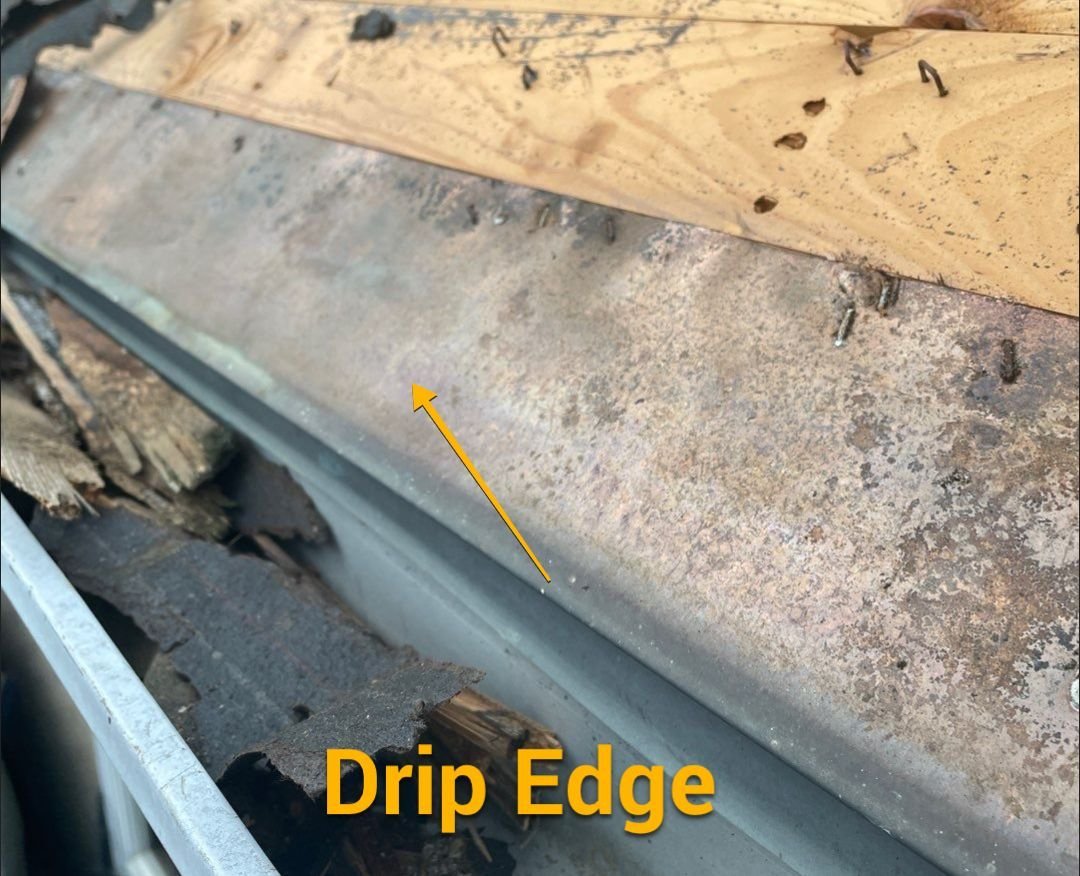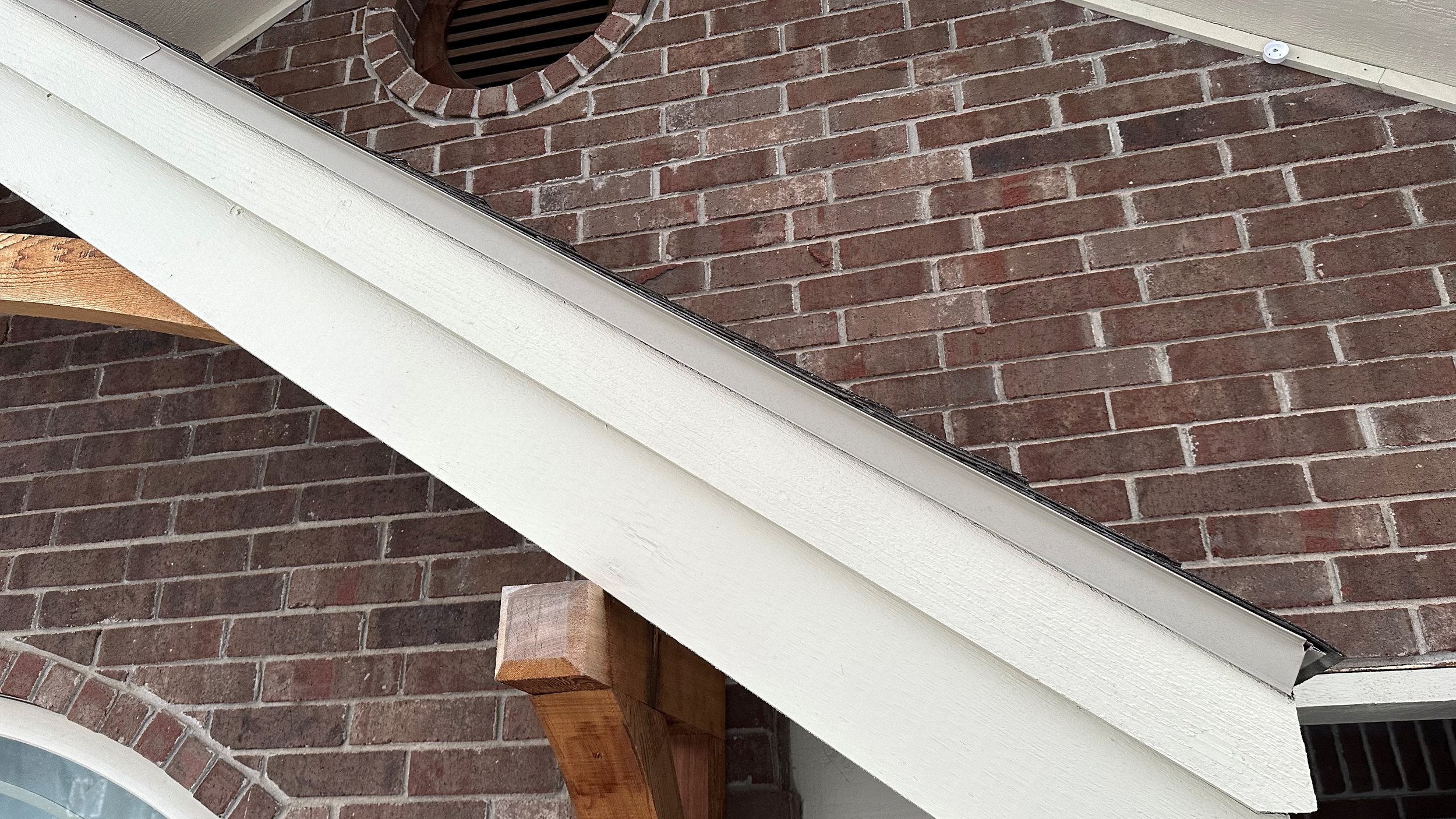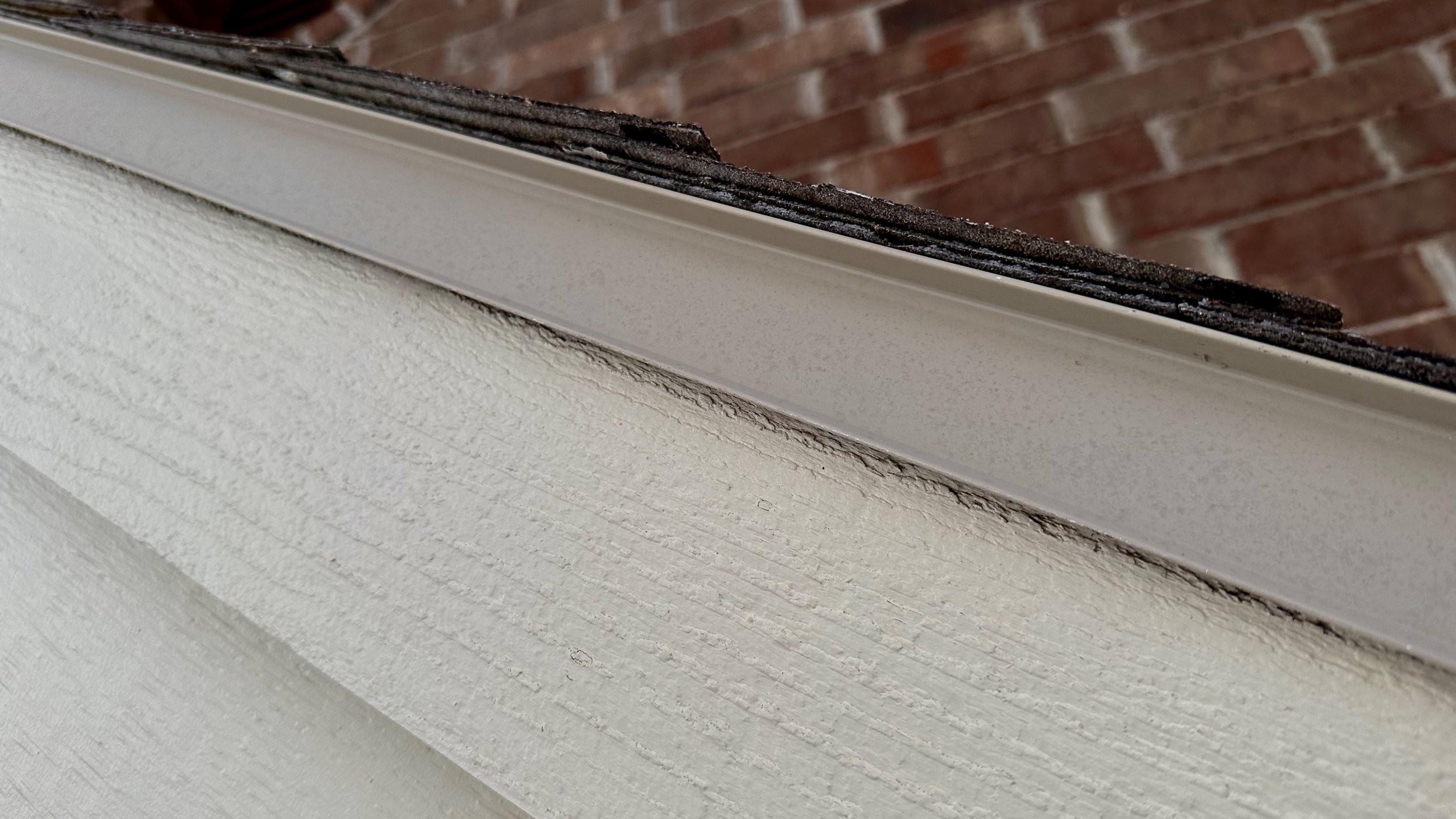Why Is Drip Edge Important On My Roof?
A roof can make up as much as 60% -70% of the area of your home’s exterior. Every roof component has a purpose that contributes to the protection of your dwelling and everything inside. Drip edge plays a critical role in weather protection and is almost always found on a well functioning roof system. In this post, we will outline the importance of drip edge and its proper installation.
So What is Drip Edge?
Drip edge is an edge flashing that is installed on all of the eaves and rakes (or perimeter) of a roof. The most common style is made of aluminum and comes in a variety of colors to complement either the fascia or the roof color. Other types of drip edge include galvanized metal or copper.
Before 2009, drip edge was not required by building codes, but municipalities and building officials found that its function was important enough to make it mandatory for all roof installations. According to current building code, all roofing in Northwest Arkansas is required to include a drip edge at the perimeter.
Why is Drip Edge Important?
The most important function of drip edge is water management. It helps redirect water dripping off the edge of the shingles away from the fascia and into the gutters. Drip edge also reduces the possibility of water wicking back under the shingles and onto the decking underneath (in a process called capillary action). If water is allowed to seep behind the fascia and gutters, it will eventually rot the fascia boards, soffit and even the rafter tails. Properly installed drip edges can eliminate this worry.
How is Drip edge Installed?
If you are having a new roof installed, this is something you should ask your contractor. Not every roofer in Northwest Arkansas will install drip edge according to the code and manufacturer installation instructions.
Thinking in terms of water flow, you should never allow water to run behind any materials as it flows downhill. For this reason underlayment should be installed ON TOP of drip edge at the eaves. If water were to get behind the shingles and on the underlayment, it would then run over the top of the drip edge and into the gutter, not behind it and on to the fascia.
At the rakes, or the gable ends, the opposite is true. Drip edge should be installed OVER the underlayment.
Drip Edge Aesthetics
In addition to the functional protection drip edge provides, it also adds to the visual appeal of the roof line. Straight, clean lines with a factory finish make for a satisfying outline to your new roof.
While there are several colors to choose from, not all fascia colors are an exact match to the new factory finish. If the drip edge color isn’t an obvious match to the fascia, another option many customers choose is to coordinate the drip edge with the color of the roof. Example: Black drip edge with a black shingle. Color coordinating the drip edge with the shingles creates a “pop” that highlights the roof line creating a more dramatic effect.
In conclusion, drip edge is an essential component to your roof that adds attractive and durable protection. Contact us for a free roof assessment and let us help you keep your roof in top condition.






